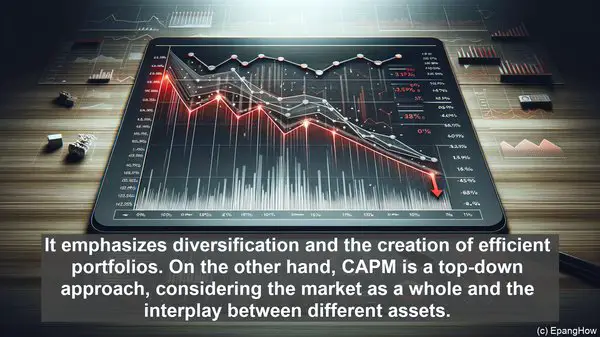Introduction: The World of Investment Analysis
Hello everyone, and welcome to today’s article! When it comes to making informed investment decisions, there are several analytical tools at our disposal. Two such tools, mean-variance analysis and the capital asset pricing model (CAPM), have long been staples in the field of finance. While they share a common goal of optimizing investment portfolios, their methodologies and underlying principles differ significantly. So, let’s delve into the intricacies of each and explore their unique features.
Mean-Variance Analysis: Balancing Risk and Return
Mean-variance analysis, pioneered by Harry Markowitz in the 1950s, is a cornerstone of modern portfolio theory. At its core, it seeks to strike an optimal balance between the expected return and the associated risk of a portfolio. The analysis begins by assessing the historical returns and volatilities of individual assets. By combining these assets in different proportions, the analyst can create a range of portfolios with varying risk-return profiles. The key idea here is to identify the ‘efficient frontier,’ a set of portfolios that offer the highest expected return for a given level of risk. By diversifying assets, the analyst can potentially reduce the overall risk of the portfolio without sacrificing returns.
Capital Asset Pricing Model: Factoring in Systematic Risk
While mean-variance analysis focuses on the risk and return of individual assets, the capital asset pricing model takes a broader view, considering the entire market. Developed by William Sharpe in the 1960s, CAPM introduces the concept of systematic risk, which is the risk inherent in the overall market. According to CAPM, an asset’s expected return is not solely determined by its own risk but also by its correlation with the market as a whole. The model incorporates the risk-free rate, the market’s expected return, and the asset’s beta, a measure of its sensitivity to market movements. By factoring in these variables, CAPM provides a framework for estimating an asset’s expected return, which can then be used to assess its desirability within a portfolio.

Key Differences: Methodology and Application
While both mean-variance analysis and CAPM are tools for investment analysis, their methodologies differ significantly. Mean-variance analysis is a bottom-up approach, focusing on individual assets and their characteristics. It emphasizes diversification and the creation of efficient portfolios. On the other hand, CAPM is a top-down approach, considering the market as a whole and the interplay between different assets. It provides a more macroscopic view of the investment landscape. In terms of application, mean-variance analysis is often used by individual investors and portfolio managers to construct diversified portfolios. CAPM, with its market-wide perspective, is frequently employed in the valuation of large-scale projects and in determining the cost of capital for companies.
Real-World Relevance: Pros and Limitations
Both mean-variance analysis and CAPM have made significant contributions to the field of finance and continue to be widely used. Mean-variance analysis, with its focus on diversification, helps mitigate unsystematic risk, which is the risk specific to individual assets. CAPM, by considering systematic risk, provides insights into an asset’s contribution to the overall market risk. However, it’s important to note that these models have their limitations. Mean-variance analysis relies on historical data, which may not always be indicative of future performance. CAPM, while providing a useful framework, makes certain assumptions, such as the efficient market hypothesis, which may not hold true in all situations. Therefore, it’s crucial for analysts and investors to use these models as tools, supplementing them with other forms of analysis and judgment.

